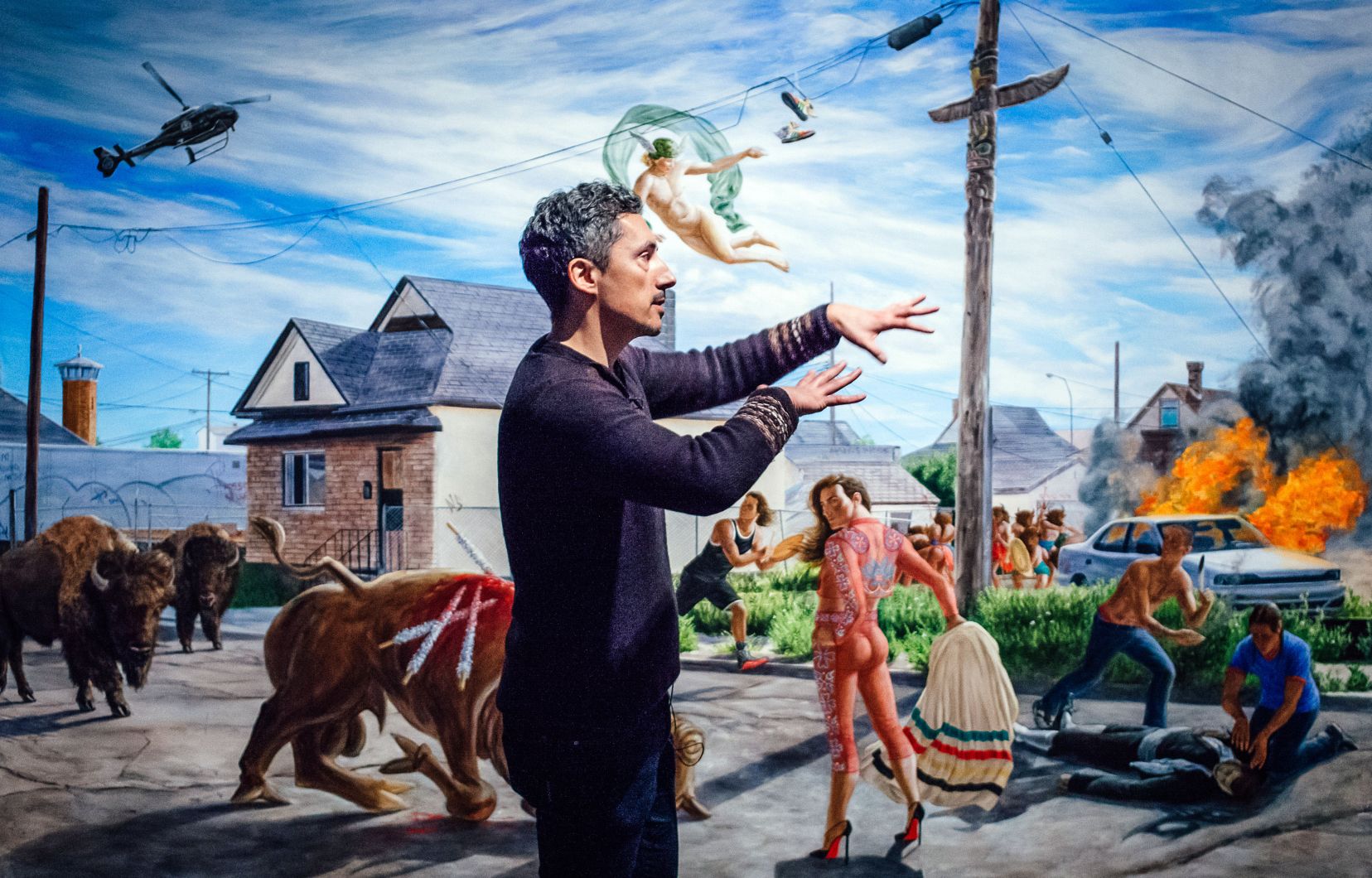Canadian artist Kent Monkman’s solo exhibition, Shame and Prejudice: a Story of Resilience, on display at the McCord Museum until May 5, offers a selection of the artist’s re-appropriated paintings and sculptural works focusing on indigenous experience, including well known pieces such as The Scream. Monkman is one of Canada’s prevailing contemporary artists and draws on his Cree ancestry to inform the body of his work. Monkman’s oeuvre is primarily concerned with the history of colonialism in Canada, touching on themes such as resilience, loss, and sexuality to engage with settler-indigenous relationships. Many of his sculptures, paintings, and installations employ what local historian Reilley Bishop-Stall terms ‘archival intervention’ or ‘visual sovereignty.’ These terms refer to works of art that challenge colonial representation within the artistic canon, while deconstructing traditional representations generated by white individuals.
Monkman’s mastery of the mediums that he parodies and re-appropriates is striking. At first glance, The Bears of Confederation appears to be a replica of a landscape by an artist like Albert Bierstadt and George Varley that nostalgically renders nature as a resource to which man feels entitled. Upon closer examination, Monkman subverts artistic tropes, using historical or invented characters. These figures frequently enact homo-eroticism or BDSM play amid scenic vistas. His works expose centuries of indigenous oppression, expressing the atrocities of the residential school system and the negative implications of colonial trade systems.
One of Monkman’s recurring characters is Miss Chief Eagle Testickle, Monkman’s alter ego fashioned in the likeness of Cher, who provoked controversy with her 1973 album Half-Breed in which the singer-songwriter exploited her supposed Native American heritage by wearing traditional feathered headdresses in her performances and on the album cover. Many of the works at Monkman’s exhibition cast Miss Chief as a troublemaker, able to traverse spacial and historical boundaries by appearing in scenes from multiple time periods and locations. The character plays on social perceptions of ‘deviant’ sexuality to reclaim indigenous autonomy. For instance, in The Daddies, Monkman reproduces Robert Harris’ 1884 painting Meeting of the Delegates of British North America to Settle the Terms of Confederation, and places a nude Miss Chief in the centre of a room filled with gawking male delegates.
The first several rooms of the exhibition intersperse Monkman’s own works and those from which he draws influence, including paintings by 19th and 20th century Western masters, juxtaposing canonical religious scenes and landscape vistas beside re-appropriated versions. The exhibition also showcases Monkman’s sculptural installations, including an eery, moving replica of Fragonard’s The Swing, and nativity scenes in which stereotypical representations of indigenous persons, dressed in Red Skin and Chiefs sports jerseys, replace Mary and Joseph.
In conjunction with the exhibition, Monkman delivered a lecture on Feb. 6 at Pollack Hall, providing an overview of his work’s development and describing the processes and inspirations behind his opus.
“There’s so many histories of indigenous experiences, both present and historical, that have never been authorized in this very powerful language of painting,” Monkman said. “I needed to fill these gaps that really authorize indigenous experience”.
Canada and the United States are only beginning to acknowledge their histories of violence and oppression, which have long been obscured by narratives of national development. Monkman believes that part of this process must include providing outlets and voices for indigenous persons, and allowing their expression to to pervade mainstream art and pop culture. While works detailing the ongoing turbulence of settler-colonial relationships are often critiqued for reifying the very violence they seek to dispel, Monkman’s work is unique for its comical yet critical approach to the indigenous experience.








